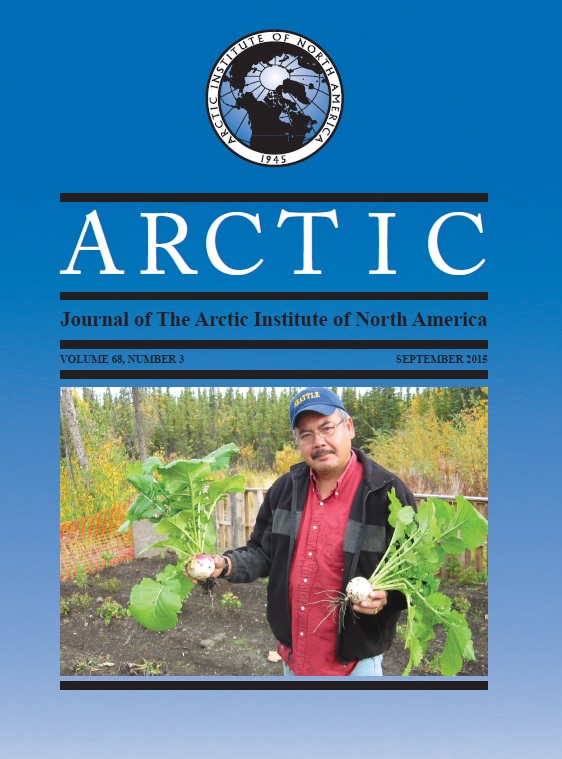Variation in Ringed Seal Density and Abundance in Western Hudson Bay Estimated from Aerial Surveys, 1995 to 2013
DOI :
https://doi.org/10.14430/arctic4503Mots-clés :
phoque annelé, Pusa hispida, densité, abondance, levé aérien, glace de mer, baie d’Hudson, diminutionRésumé
Nous avons fait les levés aériens systématiques de phoques annelés sur de longs transects en bandes dans l’ouest de la baie d’Hudson (OBH), au Canada, de la fin de mai au début de juin des années 1995 à 1997, 1999, 2000, 2007 à 2010 et 2013. Pendant toute la durée de l’étude, la densité de phoques annelés hissés sur la glace a varié de 1,22 phoque/km2 en 1995 à 0,20 phoque/km2 en 2013. Les estimations de densité ont varié considérablement au cours de la période visée par l’étude et, à l’exception de 2013, elles semblaient suivre un profil cyclique. Bien que les estimations de densité semblent également suivre une tendance à la baisse au fil du temps, les résultats de la régression linéaire multiple, pondérée par les levés, n’ont indiqué aucune tendance importante sur le plan de la densité de phoques annelés en fonction de l’année, de la date des levés ou de la proportion d’eaux libres. Par ailleurs, aucune corrélation importante n’a été observée pour n’importe quelle variable environnementale et n’importe quelle estimation de densité. Puisque la proportion de phoques hissés au moment des levés est inconnue, les estimations de densité de phoques annelés dans l’OBH présentées dans cette étude devraient être considérées comme des indices susceptibles d’aider à explorer les tendances en matière d’abondance. Bien que nos résultats ne laissent pas entrevoir la présence d’un déclin important, la faible estimation de densité enregistrée en 2013 pourrait indiquer qu’il se produit des changements de population et que ceux-ci ne sont pas attribuables à un cycle naturel. Nous n’avons pu examiner les effets directs des changements en matière d’approvisionnement alimentaire ou de prédation, mais les ours polaires, les renards arctiques et les communautés inuites de la région de la baie d’Hudson subiraient tous des effets négatifs si les populations de phoques annelés diminuaient considérablement. Il y a lieu de faire de la surveillance et des recherches dirigées pour comprendre à quel mécanisme les changements observés sur le plan de la densité de phoques annelés pourrait être attribuable.Téléchargements
Les données relatives au téléchargement ne sont pas encore disponibles.
Téléchargements
Publié-e
2015-08-13
Numéro
Rubrique
Articles


